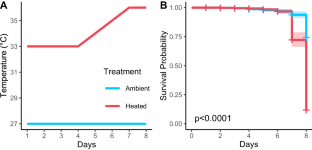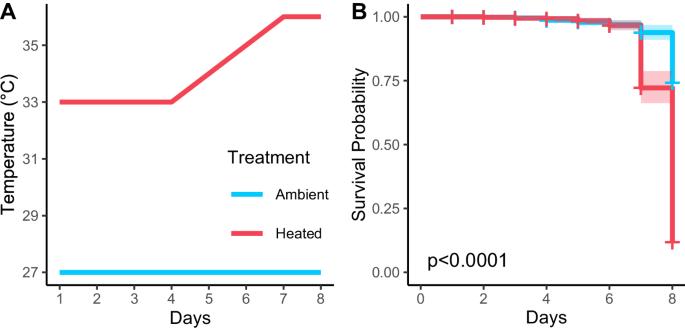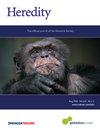复杂的亲本效应影响垂直传播珊瑚幼虫耐热性的变化。
IF 3.1
2区 生物学
Q2 ECOLOGY
引用次数: 0
摘要
珊瑚种群必须能够适应不断变化的环境条件,珊瑚礁才能在气候变化中持续存在。由于宿主动物、甲藻共生体和环境之间复杂的相互作用,这些生物的适应潜力很难预测。在这里,我们从来自一个珊瑚礁的 6 个 Montipora capitata 群体中创建了 26 个幼虫家族,这些幼虫家族在耐热性方面表现出显著的遗传变异。我们的研究结果表明,9.1%的幼虫的耐热性是普通幼虫的四倍。幼虫耐热性的差异主要是由母体造成的,但我们没有发现证据表明这些影响是由共生体特性造成的,尽管共生体特性是从坝体垂直传播的。我们也没有发现共生体特性导致生殖不相容的证据。这些数据表明,该种群的遗传变异很大,这为自然选择提供了原材料。本文章由计算机程序翻译,如有差异,请以英文原文为准。


Complex parental effects impact variation in larval thermal tolerance in a vertically transmitting coral
Coral populations must be able to adapt to changing environmental conditions for coral reefs to persist under climate change. The adaptive potential of these organisms is difficult to forecast due to complex interactions between the host animal, dinoflagellate symbionts and the environment. Here we created 26 larval families from six Montipora capitata colonies from a single reef, showing significant, heritable variation in thermal tolerance. Our results indicate that 9.1% of larvae are expected to exhibit four times the thermal tolerance of the general population. Differences in larval thermotolerance were driven mainly by maternal contributions, but we found no evidence that these effects were driven by symbiont identity despite vertical transmission from the dam. We also document no evidence of reproductive incompatibility attributable to symbiont identity. These data demonstrate significant genetic variation within this population which provides the raw material upon which natural selection can act.
求助全文
通过发布文献求助,成功后即可免费获取论文全文。
去求助
来源期刊

Heredity
生物-进化生物学
CiteScore
7.50
自引率
2.60%
发文量
84
审稿时长
4-8 weeks
期刊介绍:
Heredity is the official journal of the Genetics Society. It covers a broad range of topics within the field of genetics and therefore papers must address conceptual or applied issues of interest to the journal''s wide readership
 求助内容:
求助内容: 应助结果提醒方式:
应助结果提醒方式:


